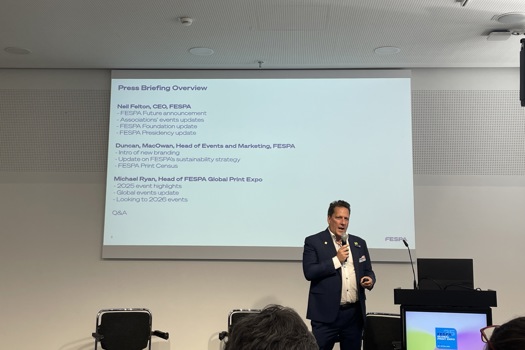Invest in interest-free loans
"Use interest-free loans to invest in energy-saving technologies. Then use the savings to pay off the loans short term and re-invest the savings long term - 0% loans from the Carbon Trust are available for many energy saving projects (see full details at: www.carbontrust.co.uk). This process allows an organisation to pay back the cost of the investment across an agreed period using the savings made from implementing a project. It is essential to choose measurable, proven projects with a great deal of care, while ensuring that the anticipated savings are realistic in terms of timeline and value."
Rob Norwell UK environmental and compliance manager at Stralfors
Reduce, re-use, recycle
"Archaic as it may sound, by putting a brick in every toilet cistern will cut water use. Also, make it a policy to purchase office supplies and furniture from recycled materials and sustainable sources. This includes everything from paper to chairs and desks."
Bradley Jones sales director at MCR Print
Ensure employee buy-in
"Before investing in new plant or equipment, gain the commitment of your staff to the principles of reduction, recycling and re-use. Encourage their ideas and suggestions - they may surprise you. We reduced our electricity consumption after implementing a few small measures and, with a commitment from everyone involved, made them work."
David Whitaker operations director at Warren Board
Switch off after use
"It may sound obvious, but a lot of equipment is left on unnecessarily overnight or at weekends. By putting policies in place to maximise switching off, you engage your staff, minimise your environmental impact and save money. Devices such as EnergyPro can be connected to any appliance or piece of equipment. Data regarding energy usage can then be collected, analysed and monitored on a regular basis to ensure it is used efficiently. Areas of possible savings can be identified and equipment can then be switched off. In some cases, it may also highlight obsolete infrastructure that would benefit from being replaced with a more environmentally friendly alternative."
Patrick Headley GI Direct sales director
Waste streamlining
"Contact your waste contractor and confirm what happens to each segregated waste stream. We know that each of the 11 waste products we segregate is treated appropriately and that resources are concentrated on the most efficient areas - for example, waste oil is made into low-grade fuel and our aluminum plates are melted down and reused as raw material."
Philip Reed Redlin Print's environmental manager
Turn waste into resource
"Ideas from staff are actively sought and we employ a specialist consultancy to help improve our environmental performance. Clays, the book printing division of St Ives, discovered a new kind of recycling for one of its largest by-products - paper dust - at a worm farm in Norfolk. Clays previously disposed of its paper dust in local landfill sites, handling approximately 40 tonnes per year. The new process has eliminated this time-consuming activity and the worm farm is utilising the paper dust as a valuable resource. Clays incinerates the dust to burn away elements that cannot be recycled and the waste management company, ORM North Norfolk, takes the resulting paper ash away. Paper dust is an excellent source of potash, a natural fertiliser. The worms don't digest the ash - they simply mix it into the other bedding materials to create a very high-quality soil conditioner."
Rob Kelly St Ives Group marketing director
Ask the staff
"Encourage staff and management alike to suggest green ideas. This has proved key to making environmental changes in the work place. For instance, we use a chipper to relieve the build-up of broken pallets, which we all know are a pain to get rid of, and this has saved us sending them to landfill. This is just one of the ideas that came from a member of staff."
Greg Priest works director at Quentin Press
Top green tips
PrintWeek readers reveal their best bits of advice for improving your environmental profile







